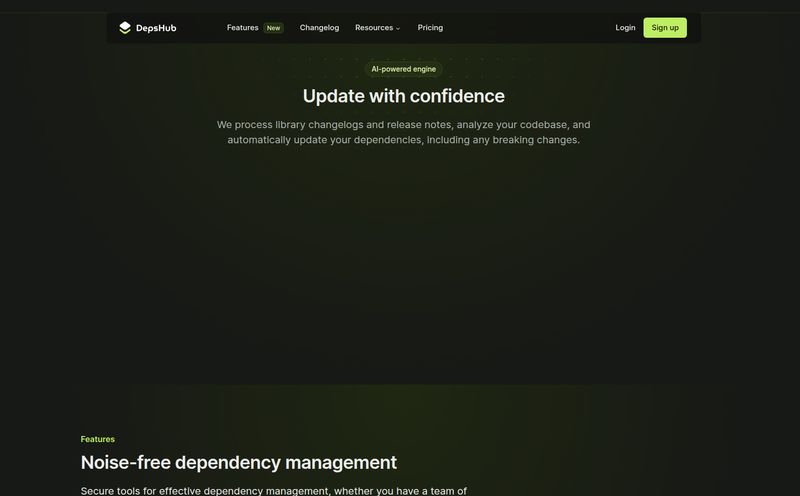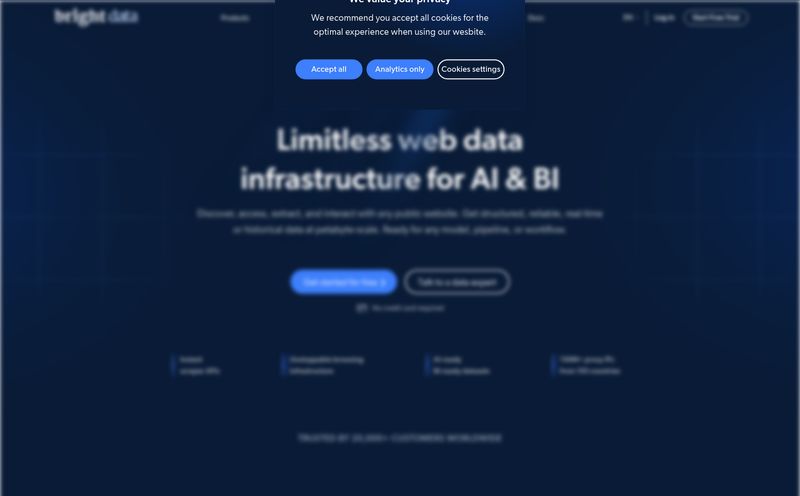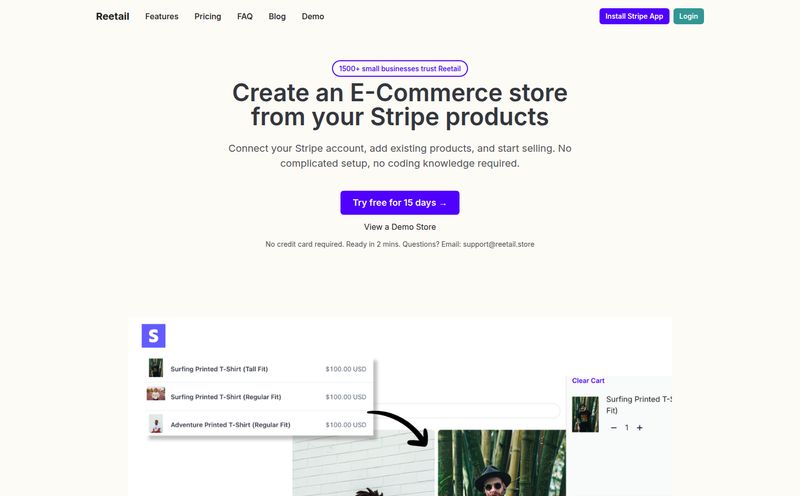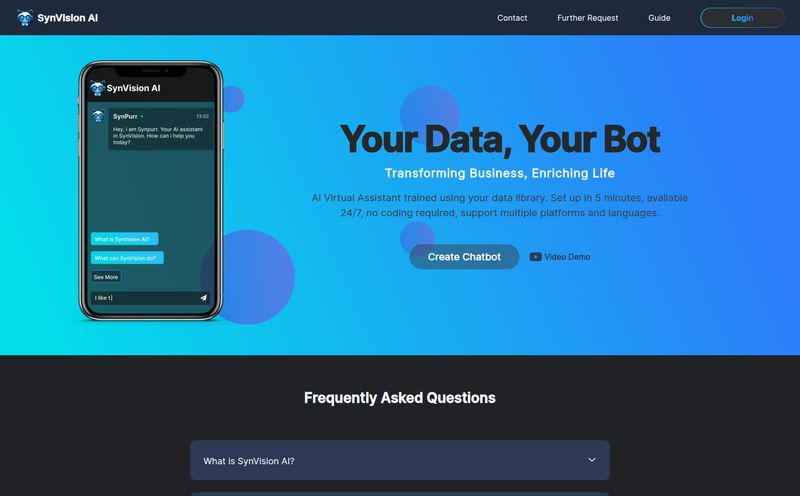If you’ve ever tried to launch an app, a SaaS product, or even a moderately complex website, you know the drill. You start with the exciting part—the core idea, the unique feature, the thing that’s going to change the world (or at least your corner of it). And then... reality hits. You need user accounts. You need a login system. You might need to take payments. Suddenly your brilliant idea is buried under a mountain of boilerplate work, stitching together three different APIs with duct tape and a prayer.
I’ve been there more times than I can count. It’s a rite of passage, but it’s a frustrating one. You spend weeks building a secure, scalable authentication flow that your users will probably still find annoying. So when a tool comes along promising to bundle all that mess—authentication, user management, and even payments—into a single, neat little SDK, my ears perk up. That tool is Rownd.
Is it just another player in a crowded field, or is it genuinely a game-changer? I decided to take a proper look. What I found was... interesting. Very interesting.
So, What Exactly is Rownd?
On the surface, Rownd calls itself an "AI-ready App Services Platform." That's a mouthful of marketing, I know. In plain English, it’s a toolkit for developers and product teams that handles the boring but critical parts of an application. Think of it as the plumbing and electrical wiring for your digital house. You don't want to do it yourself, but you absolutely need it to work perfectly.
It’s a single package that aims to replace the need for separate services like Auth0 for authentication, Stripe for payments, and a custom-built database for user profiles. The whole pitch is about speed and consolidation. And being backed by YCombinator, the legendary startup accelerator, gives it a certain glow of legitimacy. They don't typically back duds.
The Core Features That Actually Matter
A feature list is just a list until you understand why it matters. Here’s my breakdown of what Rownd brings to the table.
More Than Just a Login Box
Authentication is Rownd’s bread and butter. But they’ve clearly thought about the user experience, not just the security checks. The login box is the front door to your app; if it's clunky or demanding, people will just walk away. Rownd offers a whole suite of modern, frictionless methods like passwordless sign-in, magic links that get emailed to you, and even passkeys. This is the stuff that makes users feel like they're living in the future. Less friction almost always translates to better conversion rates. Period.
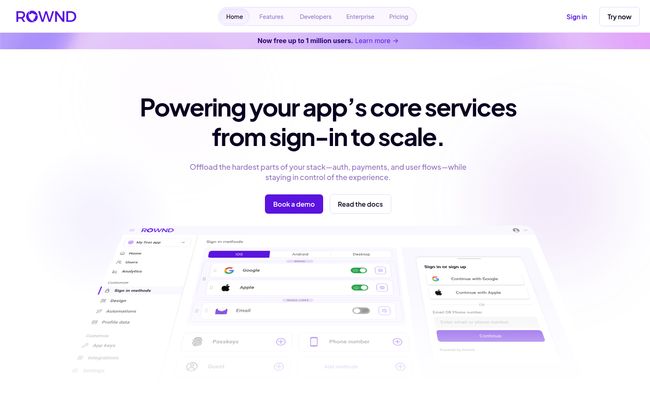
Visit Rownd
The All-in-One Dream Team
This is the big one. The idea of having authentication, user management (like onboarding flows and profile pages), and payments all talking to each other from the get-go is... well, it's the dream, isn't it? It means no more syncing user IDs between your auth provider and your payment gateway. It means when a user signs up, their payment info can be part of a single, unified profile. This consolidation isn't just a convenience; it's a massive reduction in complexity and potential points of failure. As one of their testimonials puts it, they saw a 30% increase in conversions just by simplifying their onboarding. That’s not pocket change.
Built for Blazing Speed (and Developer Sanity)
Rownd claims you can "integrate in 10 seconds." Now, as a seasoned pro, I'm naturally skeptical of claims like that. But the spirit of it holds true. They provide pre-built, customizable UI components that you can drop right into your app. This means you’re not starting from scratch, designing modals and buttons and error states. For a startup trying to build an MVP or a developer on a tight deadline, this is pure gold. You get a professional-looking, secure, and functional user system in minutes, not weeks. It supports a ton of modern frameworks too, from React and Next.js to Vue, Angular, and native mobile apps.
Let's Talk Money: The Rownd Pricing Model
Okay, this is where things get wild, and honestly, it’s what caught my attention first. How does Rownd charge for this magic? Their pricing structure is... aggressive. In a good way.
Their main plans are pretty straightforward:
- Builder: This plan is $0. Free. And it includes up to 1 million monthly active users. I had to read that twice. For personal projects, MVPs, and early-stage startups, this is almost unbelievable.
- Scale: At $149/month, this is for growing businesses. It also includes the first 1 million users for free, but presumably comes with more features geared towards teams and scaling operations.
- Enterprise: This is a custom plan for the big leagues, with custom pricing and features. Again, the first 1 million users are free.
But Watch Out for the Add-ons
Now, here's the catch. It's not a nasty "gotcha," but it's something you need to be aware of. The free Builder plan is fantastic, but if you want to get fancy, you’ll need to pay for add-ons. This is a pretty standard SaaS strategy, but the costs can add up.
Here’s a quick look at the extras:
| Add-on | Monthly Cost | What it does |
|---|---|---|
| Advanced customizations | $10 | Style your emails, modals, etc. |
| Extended analytics | $10 | Get a full year of user metrics. |
| Custom domains | $50 /domain | Connect your own brand domain. |
| Smart links | $50 | Create unlimited AI-powered links. |
| Sign in via SMS | $50 | Includes 1,000 messages, with overage fees. |
So, your "free" plan can suddenly become a $110/month plan if you need a custom domain and SMS sign-in. It's still a great deal compared to building it all yourself, but it's important to go in with your eyes open. That $50/month for a custom domain feels a bit steep to me, personally, but I get why they charge for it.
My Honest Take: The Good, The Bad, and The Intriguing
So, after digging in, what's my verdict? It's overwhelmingly positive, with a few caveats.
What I Genuinely Like
The consolidated approach is a massive win. The mental overhead of managing multiple vendors for core functionality is a real drain on small teams. Rownd elegantly solves this. But the star of the show is the free tier. Offering 1 million MAUs for free is a direct challenge to competitors like Auth0 and Clerk. It completely changes the financial calculation for new projects, letting you focus on product-market fit instead of your auth bill.
Where I'd Pause for Thought
The add-on costs are my main point of hesitation. You need to map out exactly which features you need to avoid surprise bills. More importantly, while they boast SOC-2 certification (which is great for security), there’s no explicit mention of HIPAA readiness. For anyone in the health-tech space, that could be an immediate dealbreaker. It's a niche concern, but a critical one for that niche. I'd also love to see a more direct, feature-by-feature comparison against the big players. They're confident, so they should show us the receipts!
Who is Rownd Actually For?
I see a few perfect fits for Rownd:
- The Indie Hacker & Startup Founder: This is a no-brainer. You can get a production-ready, scalable user system up and running over a weekend, for free. It’s an incredible accelerator.
- The Product Team at a Mid-Sized Company: For new projects or apps, Rownd lets you bypass internal backlogs and legacy systems to launch something quickly and professionally.
- The Agency Developer: Having Rownd in your toolbox means you can offer clients a robust, secure auth and payment solution without reinventing the wheel for every single project. It adds huge value and saves immense amounts of time.
Frequently Asked Questions
- Is Rownd really free for up to 1 million users?
- Yes, the core authentication and user management for up to 1 million monthly active users is free on all plans. However, features like custom domains, SMS sign-in, and advanced styling are paid add-ons, particularly on the free 'Builder' plan.
- Can I customize the look and feel of the sign-in forms?
- Absolutely. Rownd provides pre-built UI components that are easy to drop in, and for deeper customization like changing styles on emails and modals, they offer the 'Advanced Customizations' add-on for $10/month.
- How secure is the Rownd platform?
- Security seems to be a top priority. Rownd is SOC-2 certified, which is a rigorous, industry-standard audit of security, availability, and confidentiality practices. They also use advanced encryption to protect user data.
- What development frameworks does Rownd support?
- It supports a wide range of modern web and mobile frameworks, including React, Next.js, Vue.js, Angular, plain JavaScript, as well as native iOS (Swift) and Android (Kotlin).
- How is Rownd different from Auth0 or Clerk?
- While it competes with them on authentication, Rownd's key differentiator is its all-in-one approach. It natively integrates payments and deeper user management flows into the same SDK, aiming to be a broader app services platform rather than just an auth specialist.
Final Thoughts: Is Rownd Worth The Hype?
I went into this review with a healthy dose of skepticism, and I've come out genuinely impressed. Rownd isn't just making noise; it's offering a genuinely compelling solution to a problem every developer and product owner faces. The combination of speed, a unified platform, and that frankly insane free tier makes it a formidable new player.
It’s not perfect for everyone—large enterprises with complex, entrenched systems or those with strict HIPAA requirements might need to look elsewhere. But for the vast majority of new projects, startups, and teams that want to move fast and build great experiences, Rownd feels less like a tool and more like a superpower. I’ll definitely be spinning it up for my next side project.
